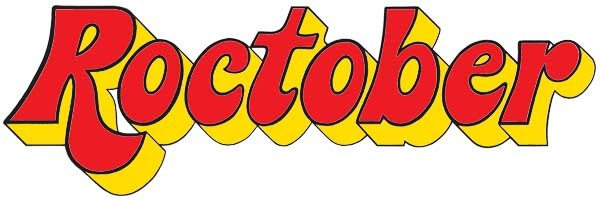We recently marked the Fiftieth (!!) Anniversary of the Bee Gees’ career as fully professional all-singing, all-playing musicians, songwriters, and performers.
This coming January 12 marks nine years since self-styled “man in the middle” Maurice Gibb’s tragic passing. And in this here year of 2011, remaining Gibbs Barry and Robin are actually threatening to continue recording, and perhaps even tour the globe, beneath the hitherto-mighty Bee Gee moniker.
This is a proposition I frankly find quite incomprehensible to fathom, let alone purchase three-figure tickets to witness in person. Though with Messrs. Pete and Roger insisting on conducting business both on stage and off as [sic?] “The Who,” I do suppose anything is possible (if not exactly practical and/or ethical).
Nevertheless, I’m far happier to report that 2011 also sees the appearance of a grand new five-decade-plus DVD retrospective on Barry, Robin, Maurice and even Andy Gibb entitled In Our Own Time. And from its very opening ultra-decibel, fire ‘n’ flashpot-festooned montage of “You Should Be Dancing” footage spanning ’76 clear through ’96 – which then cleverly cuts far back to a ’56-vintage Elvis and his similarly dance-crazed “Blue Suede Shoes” – it’s clear this is going to be one of those far too rare roc doc’s which actually has a wise and sharpened sense of socio-historical pop perspective. I mean, who was Tony Manero after all than simply Vince Everett in polyester white as opposed to jailhouse black?
Our ride duly launches out of post-war Manchester, England as Barry, Robin and (via interview footage culled from David Leaf and John Scheinfeld’s equally
adept This Is Where I Came In documentary) Maurice describe years spent as pre-teen Everly wannabe’s who eventually emigrate all the way to Australia, where they form a singing act to perform for spare change at a local race car track. But such is this young trio’s charm and already obvious talent that they soon blossom into bonafide Down-Under Beatles: the televised performance herein of a circa-’64 Bee Gee “Please Please Me” alone makes In Our Own Time nothing short of Required Viewing. Yet the fully airborne promotional footage we’re treated to next for their first Number One hit, 1966’s still-buoyant “Spicks and Specks,” displays a far more Monkee as opposed to Beatle-like mastery of the lip-sync’d absurd.
Returning to their homeland and soon after magically hooking up with none other than Fab sub-manager Robert Stigwood, a recording contract and string of (self-written and purposefully “melodramatic,” it is revealed) classics appear in typically Sixties warp-speed. Colourful “New York Mining Disaster,” “I Can’t See Nobody,” “To Love Somebody,” “Massachusetts,” “Idea” and “Words” clips follow, and even a glancing view towards each should erase all doubts that The Bee Gees were one of that genius-packed decade’s surely most accomplished by far. Case closed.
Caution: What shoots way, way up must of course fall down. So as Sixties become Seventies our heroes found themselves struggling beneath the weight of red velvet-ensconced rock operas, mutinous solo projects, meddling better halves and even their very own ill-fated television spectacular, Cucumber Castle (which may indeed be much more fun than Magical Mystery Tour, though it’s certainly no Monkees’ Head). Once the audio-visual wreckage cleared however, the brothers found themselves chastened enough to not only fully reform, but come up with two unashamedly allegorical gems, “Lonely Days” and “How Can You Mend A Broken Heart,” which appeared to all concerned to be their career swansongs.
But! We’re less than half-way through our show! And so what exactly did spare The Bee Gees at this critical point from a fate worse than Oldie Goldie residencies near Clacton-on-Sea?
Two words: Arif Mardin.
Luring them to the decidedly more sympathetic climes of Miami’s Criteria Recording Studios, then cleverly steering the brothers towards their previously unexplored r’n’b leanings (via Barry’s falsetto most pointedly), the result was a slow but steady climb both back onto their feet and then extremely high back up the international sales charts. No further explanation is really needed by me here: At least 100 million of you out there bought the ensuing records.
The backlash, of course, was instant and fierce. “Bee Gee-Free Weekends” on radio stations the world over. “Bee Gee Bonfires” of Saturday Night Fever soundtracks in Chicago baseball stadiums.
“The enigma with a stigma,” as Barry still brands The Bee Gees to this very day.
And I’m sure he doesn’t just mean the Sgt. Pepper’s Lonely Hearts Club Band movie either.
Yet for anyone who tuned away from the tale right about here, In Our Own Time continues on through subsequent years of Gibbs stubbornly continuing to craft monster hits …only for other singers (Streisand, Celine, The Divine Miss Ross and Kenny and Dolly, for example: why, there’s an additional twenty-or-so million in sales right there). Unfortunately, this otherwise platinum period also saw the loss of a severely over-self-medicated Andy Gibb, and the frightful near-exit of a similarly lost “Brother Mo” to boot. Most thankfully indeed though, Maurice eventually bounced completely back to help create what, tragically, would be his final Bee Gee masterpiece, “This Is Where I Came In,” before death on January 12, 2003.
Well, the story perhaps does not end there. One hour and fifty-one minutes into Our Own Time finds a stoic Barry insisting, and I quote, “The legacy of the Bee Gees MUST go on, one way or the other.” Cut to contemporary footage of he and faithful brother Robin, recently reunited before twin microphones in some faux-recording studio setting, crooning “To Love Somebody” and “How Can You Mend A Broken Heart.”
Fade to black. One can only hope.




No comments:
Post a Comment